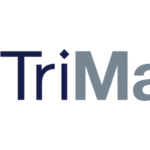There are two common options for distributors and manufacturers who want to increase channel sales: discount products or run a marketing campaign. The downside of both is that they require an investment. Both tactics will likely increase sales, but both eat into your bottom line. However, there’s an alternative solution that makes discounts and marketing more cost-effective, while also boosting salespeople’s performance, teaching you more about your customer base, and drumming up excitement around your products: incentive programs.
Incentive programs help distributors, manufacturers and suppliers increase bottom-line sales because they grow more effective over time while enhancing all sales and marketing initiatives. They can reveal buying trends, growth opportunities, and what motivates your channel partners. Specifically, the following incentive strategies and tactics help contribute to incremental sales and bottom-line growth.
Start with Specific Goals
An incentive program should have specific goals fully aligned with your organization’s overarching sales and marketing goals. A vague goal like “increase channel sales” is unlikely to work and is also harder to track and measure. Try to be as specific as possible, such as “increase independent contractors’ sales of smart thermostats by 20% by end of fiscal year.” With specific metrics to track, you’ll be able to say with confidence whether your incentive program helped you achieve your goal.
Setting a specific incentive program goal helps you select key performance indicators (KPIs), so you can track negative or positive signals of goal progress. Let’s say that incentive program registration is one of your KPIs. If you’re not getting enough program registrations, you can try more ways of reaching your contractors. You might send out an additional email campaign that bumps registrations up.
Specific goals and KPIs help you determine when to step in, where necessary, to make sure the program is on track to meet its goals. You can set up future promotions to be even more efficient and successful, which will contribute to bottom-line sales growth.
Use Effective Rewards
Does it matter how you reward participants in your incentive program? Behavioral and psychological studies have found that “tangible non-cash rewards deliver equal or greater returns to organizations in most circumstances than equivalent cash rewards.” There are a few likely reasons for this:
- Cash rewards have diminishing effectiveness. Cash becomes mentally associated with salary and seen as a given. For cash rewards to continue motivating channel partners, you have to continue increasing the amount you offer. Cash rewards aren’t necessarily bad. They can work well when used occasionally for quick-return efforts such as sales performance incentive funds (SPIFFs). For long-term sales motivation efforts that steadily grow your bottom line, though, tangible rewards work better.
- Non-cash rewards are fun and guilt-free. Studies show that people prefer non-cash rewards when they’re non-utilitarian, but not when they are utilitarian. This suggests that non-cash rewards have a “fun factor,” which removes any guilt the recipient might feel over not spending cash rewards on gas, groceries, rent, or other necessities.
- Non-cash rewards are highly visible, and great conversation-starters! Every time a reward is discussed or even used, the recipient revisits the positive experience of earning that reward. This gives tangible rewards a more memorable, longer-lasting effect than cash.
The right rewards strategy means maximizing the effect those rewards have. When it comes to offering tangible rewards, you have multiple options. You can offer gift cards, debit card funds, or reward points that can be redeemed in an online merchandise catalog. Work with an incentive program provider who allows you to offer your partners motivating, non-cash rewards.
Use the Incentive Program to Collect Sales Data
A Dun & Bradstreet and Adweek study found that two of B2B marketers’ biggest hurdles were “lack of insight into the customer journey” and “lack of available data sources.” Lack of channel visibility and access to customer data is a problem that technology hasn’t solved because it boils down to a human issue: channel partners typically have no reason to give suppliers this data. An incentive program helps overcome this barrier in two ways:
- Rewards motivate channel partners to go the extra mile. Incentive rewards can be the difference between “I don’t have time to acquire and submit a warranty registration” and “I can treat myself to something special now that I’ve submitted this warranty registration.”
- Incentive technology can make the data submission process easier. An online file upload tool allows channel partners to submit documents directly to the incentive program. Even a sales rep performing on-site installation can snap a picture of an invoice or warranty registration with their phones and receive a reward instantly.
Sales data is key to bottom-line sales. Data helps improve sales predictability so you can be proactive in your sales strategies and anticipate buyer needs. By implementing channel incentive programs, you benefit from a powerful combination of increased motivation and more sales insights.
Incentivize Training
Well-trained channel sales reps contribute greatly to bottom-line growth. The more confident and knowledgeable your sales reps are, the more expenses you can avoid from poor sales management, lack of product awareness, and customer dissatisfaction. Incentive programs help with the two Fs that make training more effective: fun and frequency.
- Fun: positive emotions help partners retain information.
Let’s face it, we’re all a little burned out on training seminars, demo videos, conferences, online courses, etc. Rewards allow you to train channel partners in a context that’s more fun and memorable. You can reward them for earning certifications, completing full courses, or even just for passing online quizzes that reinforce their training. Adding excitement isn’t simply a ploy – a study published in Nature Communications found that rewards have a “lasting positive effect. . .on the ability of individuals to retain a variety of information.”
- Frequency: repetition improves memory.
Incentive programs with an online training component allow you to execute regular and repetitive training presented in multiple ways. This variety—including video, worksheets, images, quizzes, graphs, etc.—makes it easy for you to repeatedly reinforce training while keeping it fresh and engaging. Studies show that repeating information helps people “reconceptualize information and create multifaceted memories that are more easily accessed.”
Training delivered through incentive programs is both more rewarding and more convenient. When training is easier to deliver and reinforce, your sales reps are more confident and knowledgeable about your products. An enabled, empowered sales force helps you increase your bottom line.
By starting with specific goals, using effective rewards, collecting sales data, and promoting training, you can develop an incentive program that makes a big difference in your bottom-line sales. Unlike strategies such as discounting, incentive programs have ancillary benefits such as improving sales motivation and education while helping you learn more about your distribution channel.
Nichole Gunn is Chief Marketing Officer at Incentive Solutions. Learn more in her bio below.
Related Posts
-
The automation company reported $1.857 billion in sales for its fiscal 2022 first quarter, 18.7%…
-
The manufacturer of engineered and applied products reported 4Q and 2021 sales increased by 11.1%…
-
The electronic components distributor reported 2021 4Q sales of $9.02 billion and year-end sales of…






